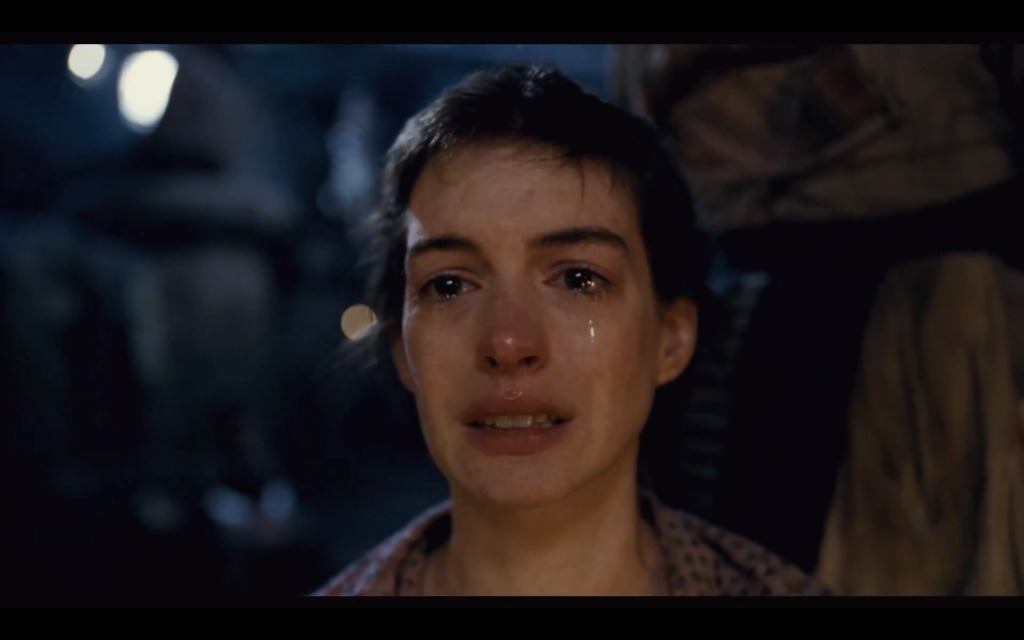She Cries
I get a lot of satisfaction from crossing stage directions out of my script. I used to be too scared to do this because I worried I was being unfaithful to the playwright or the story. Now I have a big black marker and no problem using it on the page.
But it’s not just any stage direction I’m crossing out; it’s a very specific one.
I take my marker and go searching for the ever-dreaded and seemingly inevitable stage direction SHE CRIES.
Or… SHE WEEPS.
Or better yet… SHE SOBS UNCONTROLLABLY.
Crossing out those stage directions has become a necessity. Not because I can’t relate to them: I cry, I weep, and on occasion I do sob uncontrollably. I’m not implying women don’t or shouldn’t. But I grow tired of reading scripts that suggest all women react to conflict or turmoil in the same way.
When I’m working on a script as an actor and I come upon A TEAR ROLLS DOWN HER CHEEK (or some equally ridiculous variation), I cross it out to remind myself that my whole performance, my own sense of accomplishment, the success of the story, does not hang solely on my ability to weep through the climax. Or, at least, it shouldn’t.
Unfortunately, just because I cross out SHE CRIES doesn’t mean the director does. If the director feels crying should occur, I want to honour his or her decision. I understand the value of a character who breaks down into tears or who erupts into them at unexpected moments. Tears are clear visual signifiers, and crying can be a worthy stage tool, but there is a hidden cost when using this device too casually.
I was confronted by the SHE CRIES problem while rehearsing for a show where I was meant to cry after being berated during an argument. But no tears came. In our production there was no berating, no building of tension, nothing that merited crying. The fight, as written on the page, had become an emotionally spare disagreement. Yet there was still a requirement for tears. We weren’t fulfilling the true intentions of the scene, but we could pretend we were by capping it with the successful execution of the SHE CRIES stage direction. So I found a way to cry during the run of the show. I performed emotional acrobatics and worried every night about what it meant to be a woman who bawls after a measly disagreement rather than a woman who bawls at the end of a life-changing fight.
After that production, I was left wondering if we had come to accept a woman’s tears on stage as the primary barometer for the inner life of a play, a character, or an idea. Were we using crying as a shortcut or substitution to the action? Were we being lazy? And why was I, the woman, being made responsible for upholding the emotional current of a production? In comedy there are jokes the clown makes that only land if the straight man’s deadpan reaction sells them. What if we considered crying to be a group effort too?
That’s when I began to cross out any stage directions related to SHE CRIES.
Learning this lesson as an actor has helped me immensely as a writer. When I write a scene where a character may react by crying, I attempt to leave room for the actor to employ this tactic if they choose. I’d like to think that if I write my story with enough specificity, I can trust the artistic team to determine what kind of action will serve them best, tears or no tears.
I would love for other creators to stop putting the same woman on stage, to stop writing characters whose emotional repertoire consists only of crying. It’s not just that we are seeing the same reaction, it’s that we are seeing the same version of womanhood again and again. There are hundreds of human reactions to being devastated, enraged, and overstimulated. I’d love to be surprised by one of them rather than greeted by familiar waterworks. Maybe this will free our characters from occupying space as emotional thermometers captured under bright lights.
Let’s stop the SHE CRIES stage direction because tears will always find a way to out. But if we leave room, laughter might out, or anger will out, or physical motion will out. Strong choices will leave room for the right something to out. Let’s leave SHE CRIES behind and work toward scenes where tears aren’t even necessary, because the action and the words are just oh so good. Maybe if we stop relying on SHE CRIES we will leave ourselves open to the best opportunity of all: the opportunity to be surprised by what—and who —we see on stage.









Comments